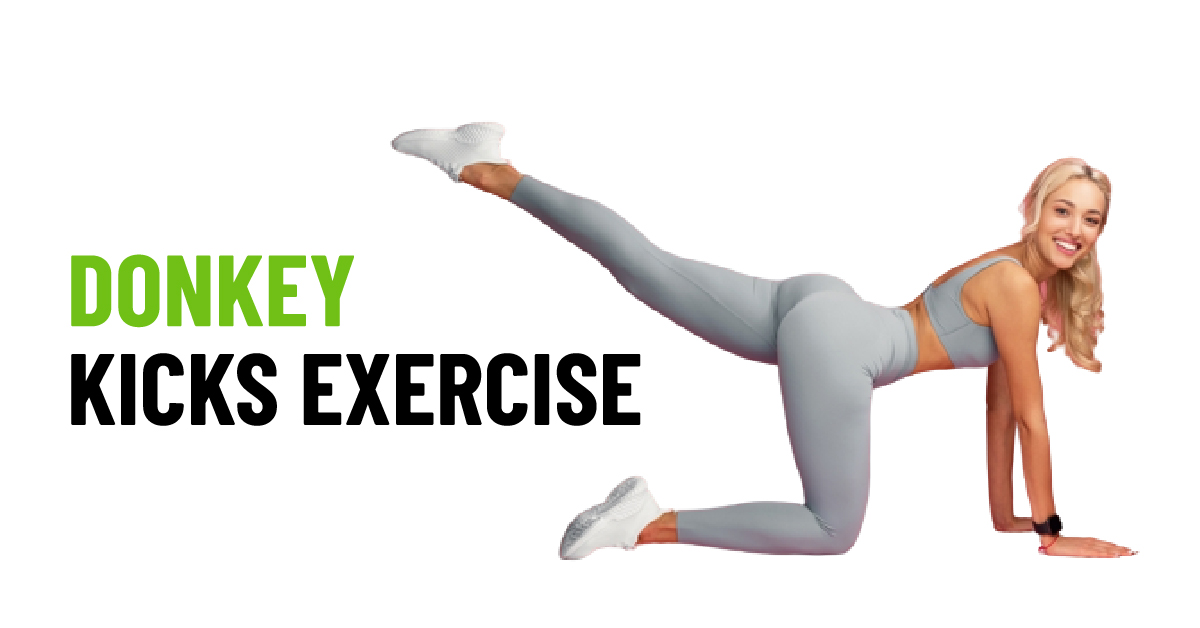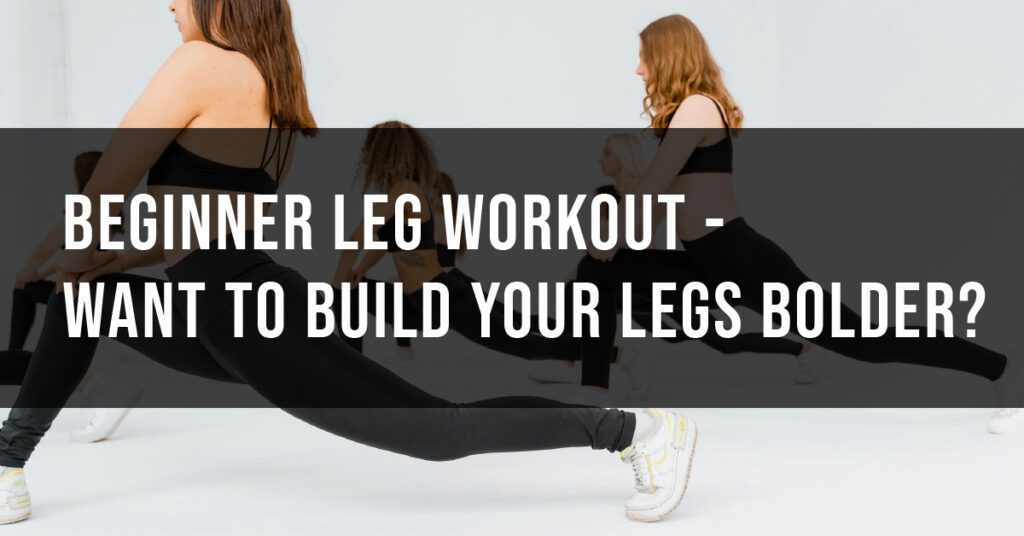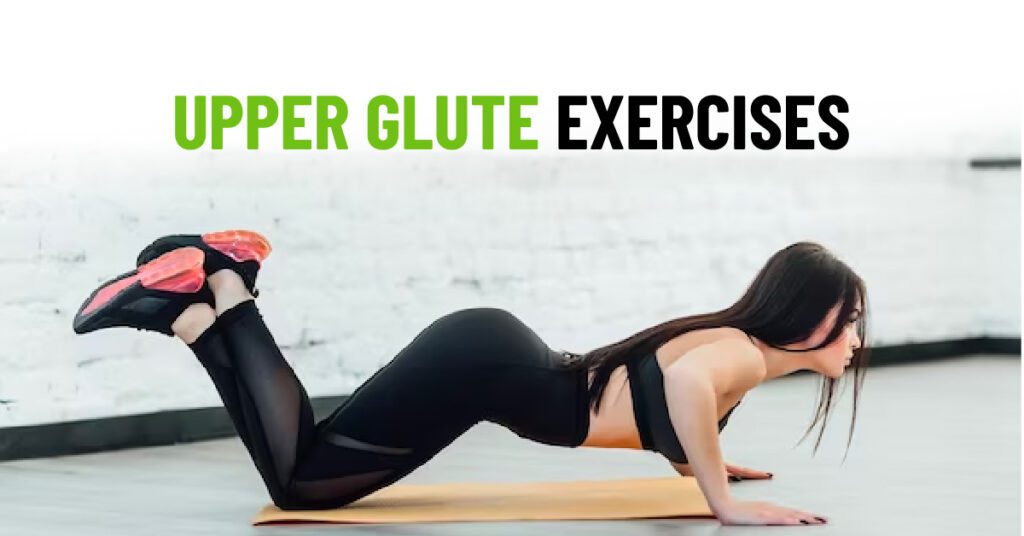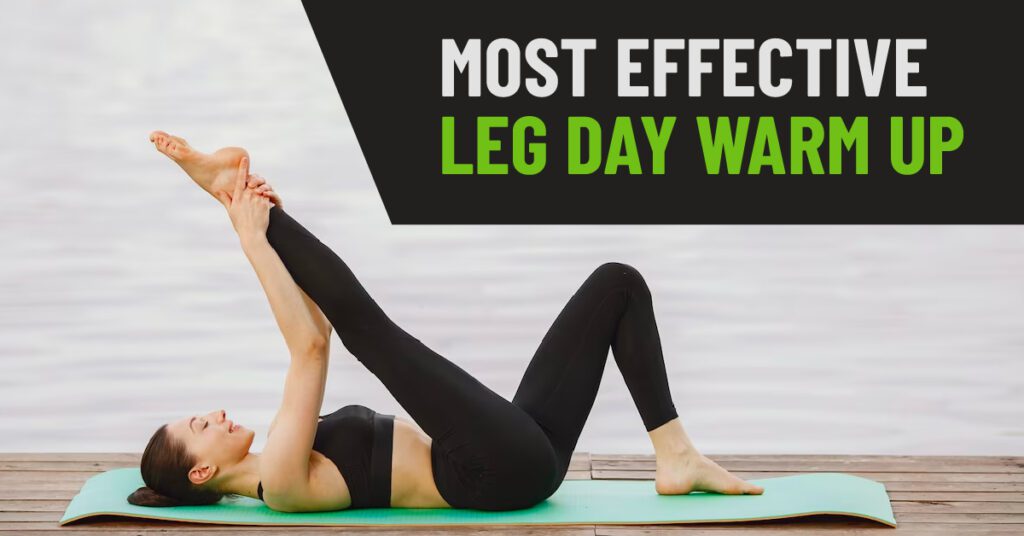Donkey Kicks Exercise to Burn Fat Faster

Also available in
Are you ready to kick your way to a stronger and more defined posterior? Look no further than the donkey kicks exercise! Whether you’re a fitness enthusiast, a beginner looking to tone up, or an athlete aiming to improve your performance, donkey kicks can be a valuable addition to your workout routine.
Donkey kicks are also known as quadruped hip extensions. It is a simple yet effective exercise that targets the gluteal muscles. By engaging the glutes, hamstrings, and lower back, the donkey kicks exercise helps sculpt and strengthen your glutes while enhancing overall lower body strength and stability.
In this article, we will delve deep into the world of donkey kicks exercise, exploring their benefits, proper form, variations, and frequently asked questions.
So let’s kick-start your journey to a stronger, perkier posterior with the mighty donkey kicks exercise.
Donkey Kicks Exercise: Targeting the Glutes
The donkey kicks exercise primarily targets the gluteus maximus, the largest muscle in the buttocks. By engaging this powerful muscle, you can build strength and definition in your posterior chain. Additionally, donkey kicks activate the hamstrings and lower back muscles, providing a comprehensive workout for your entire gluteal area.
How to perform donkey kicks properly?
To perform the donkey kicks exercise correctly, follow these steps:
- Start on all fours, with your hands directly under your shoulders and your knees aligned with your hips.
- Engage your core muscles to maintain stability throughout the exercise.
- Keeping your right knee bent at a 90-degree angle, lift your leg up until your thigh is parallel to the ground. Your foot should be flexed, and the sole facing the ceiling.
- At the peak of the exercise, squeeze your glutes. Then, slowly bring your leg back to the beginning position.
- Repeat the movement for the desired number of repetitions, then switch to the other leg.
For optimal results, aim for 3 sets of 10-15 repetitions on each leg. Remember to maintain control and focus on the mind-muscle connection, engaging your glutes throughout the entire range of motion.
Variations of Donkey Kicks
Donkey kicks exercise can be modified and progressed to suit your fitness level and goals. Here are a few variations of donkey kicks exercise you can try:
Resistance Band Donkey Kicks
Add an extra challenge to your donkey kicks by incorporating a resistance band. Secure one end of the band around your foot and the other end to a stable anchor point. The resistance provided by the band will intensify the exercise, increasing the workload on your glutes.
Weighted Donkey Kicks
For advanced practitioners, weighted donkey kicks can take your glute training to the next level. You can use ankle weights or a dumbbell placed behind your knee for added resistance. Start with lesser weights and progressively raise the weight as your strength builds.
Single-Leg Donkey Kicks
To further target each glute individually, try performing donkey kicks one leg at a time. Lift one leg off the ground, extending it straight back while keeping the other knee on the floor. This variation increases the stability challenge and enhances muscle activation in each glute.
Benefits of Donkey Kicks Exercise
Incorporating donkey kicks exercise into your fitness routine can bring about various benefits:
1. Glute Activation: The donkey kicks exercise specifically targets the glute muscles, helping to activate and strengthen them effectively.
2. Improved Posture: Strong glutes contribute to better posture by supporting the spine and promoting proper alignment of the hips and pelvis.
3. Enhanced Athletic Performance: Strong glutes play a crucial role in athletic performance, as they contribute to power, speed, and stability during activities such as running, jumping, and lifting.
4. Injury Prevention: Donkey kicks help strengthen the muscles surrounding the hips, which can provide stability and support to the joints, reducing the risk of injuries, particularly in the lower back and knees.
5. Improved Functional Movement: Strong glutes are essential for everyday activities like walking, climbing stairs, and bending over. Donkey kicks help improve the functional strength of your glutes, making these movements easier and more efficient.
6. Toned and Defined Glutes: Donkey kicks are an excellent exercise for sculpting and shaping the gluteal muscles, helping you achieve a more toned and defined appearance in your buttocks.
7. Core Engagement: Donkey kicks require core stabilization to maintain proper form and balance during the exercise. This engagement of the core muscles adds an additional element of strengthening and toning to your workout.
8. Time-Efficient: Donkey kicks can be performed virtually anywhere and require minimal equipment, making them a convenient and time-efficient exercise option.
9. Versatility: Donkey kicks can easily be incorporated into various workout routines, including bodyweight exercises, circuit training, or as part of a glute-focused workout.
10. Mind-Muscle Connection: Donkey kicks provide an opportunity to develop a strong mind-muscle connection with your glute muscles, which can enhance your overall training effectiveness and results.
Conclusion
The donkey kicks exercise is a fantastic way to target and strengthen your glute muscles. By incorporating this exercise into your routine, you can improve the shape, strength, and functionality of your glutes, leading to better athletic performance, injury prevention, and enhanced overall aesthetics.
Remember to focus on proper form, engage your core, and gradually increase the intensity as your strength improves.
FAQs About Donkey Kicks Exercise
Can donkey kick help me build a bigger butt?
While donkey kicks can certainly contribute to shaping and strengthening your glutes, it’s important to note that individual results may vary. Consistency, proper nutrition, and an overall workout routine are key factors in building muscle mass. Incorporating donkey kicks into a well-rounded exercise program can help you on your journey to a stronger and more defined posterior.
How often should I perform donkey kicks?
The frequency of your donkey kicks exercise will depend on your fitness level and goals. As a general guideline, aim to include glute-focused exercises like donkey kicks 2-3 times per week. It’s crucial to allow for rest and recovery between sessions to prevent overtraining and promote muscle growth.
Can donkey kicks cause knee pain?
When performed with proper form and technique, donkey kicks are generally safe for the knees. However, if you experience any discomfort or pain in your knees during the donkey kicks exercise, it’s essential to reassess your form. Ensure that your knee is properly aligned and not placed under excessive stress. If the pain persists, it’s recommended to consult with a healthcare professional or a certified trainer for further guidance.
Can donkey kicks help with lower back pain?
Donkey kicks exercise can potentially help alleviate lower back pain by strengthening the muscles in the glutes and core. These exercises promote better posture and stability, which can reduce stress on the lower back. However, if you have chronic or severe back pain, it’s crucial to consult with a healthcare professional before incorporating donkey kicks or any exercise into your routine.
Are donkey kicks suitable for beginners?
Yes, donkey kicks can be performed by beginners with proper guidance and modifications. Start with bodyweight donkey kicks and focus on mastering the technique before progressing to more advanced variations. It’s important to listen to your body, start slowly, and gradually increase the intensity and difficulty of the exercise over time.
Can I do donkey kicks if I have limited mobility or an injury?
If you have limited mobility or an injury, it’s essential to consult with a healthcare professional or a qualified trainer before attempting the donkey kicks exercise. They can assess your condition and provide appropriate modifications or alternative exercises that suit your needs while minimizing the risk of further injury.
More Workout
- 30 minute Pilates Workout at Home
- Complete Guide of Isotonic Exercise
- Most Effective Exercise for Back Fat
- Plantar Fasciitis Exercises | Flex Your Feet
- Best Pre Workout For Women Weight Loss in 2023
- Spider Curl Workouts to Build Big Biceps
- 8 Effective Exercise for Inner Thighs
- How to Do Standing Leg Curls – Benefits, Variations, and Tips
- The Ultimate Dumbbell Front Squat Workout






